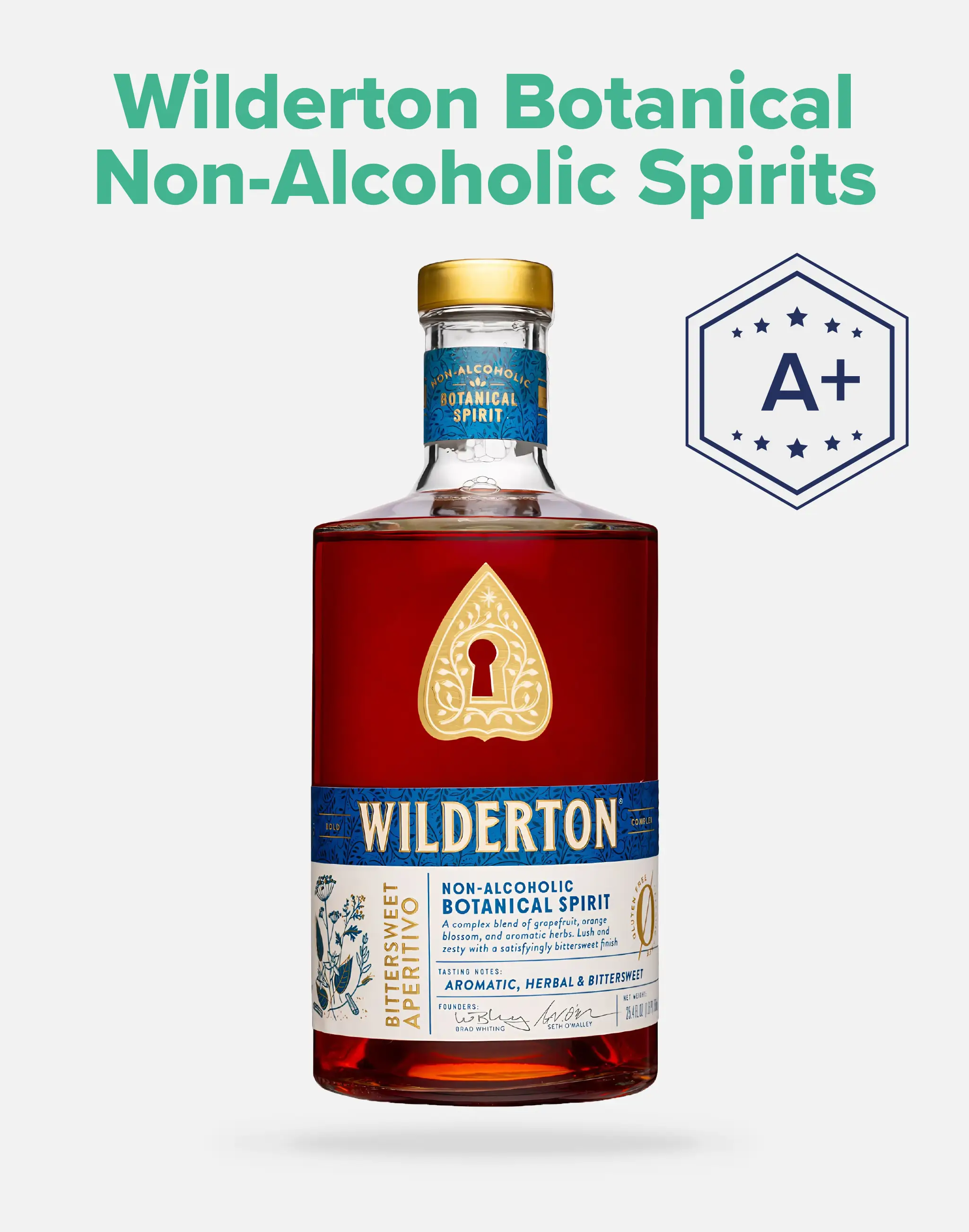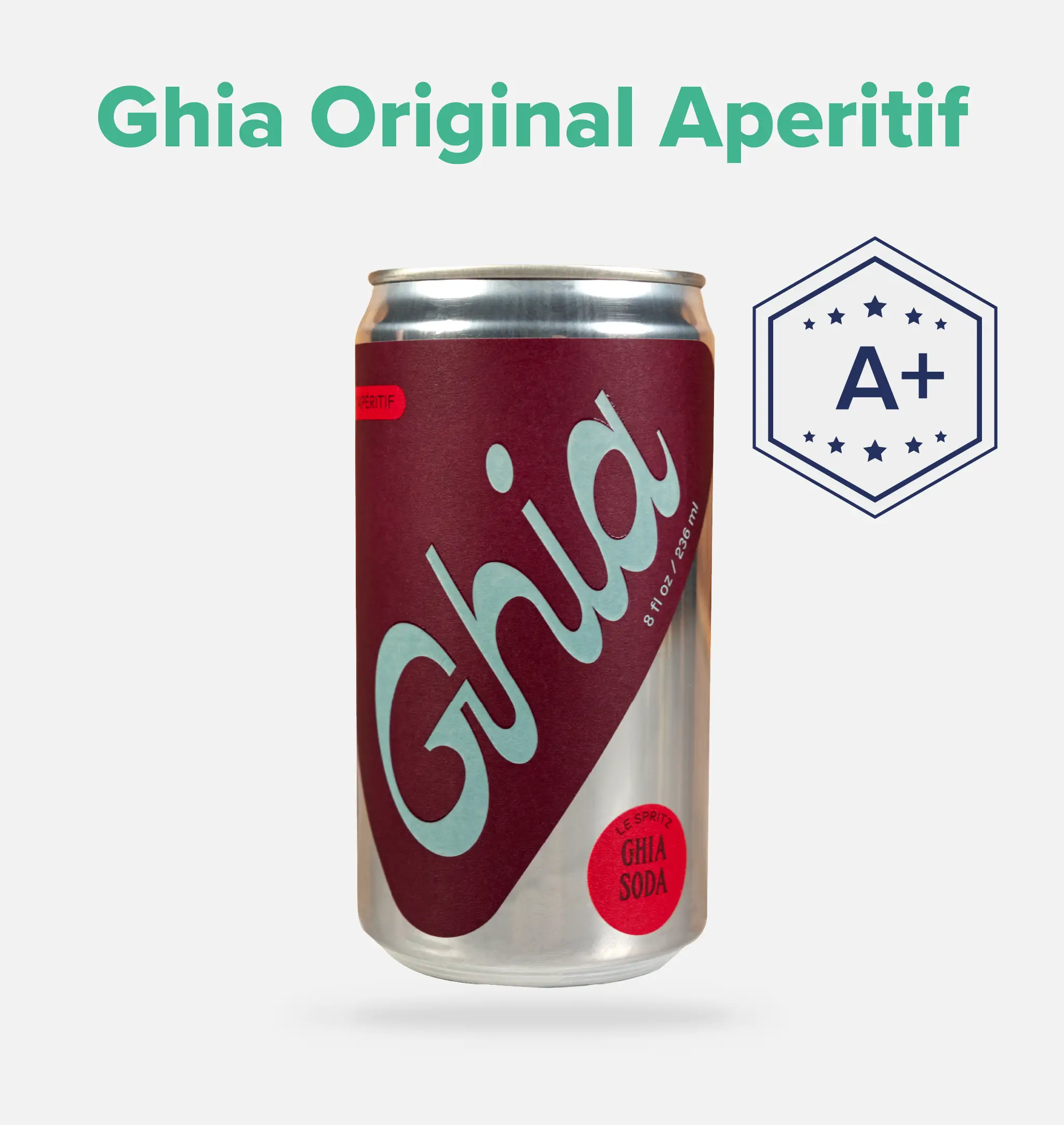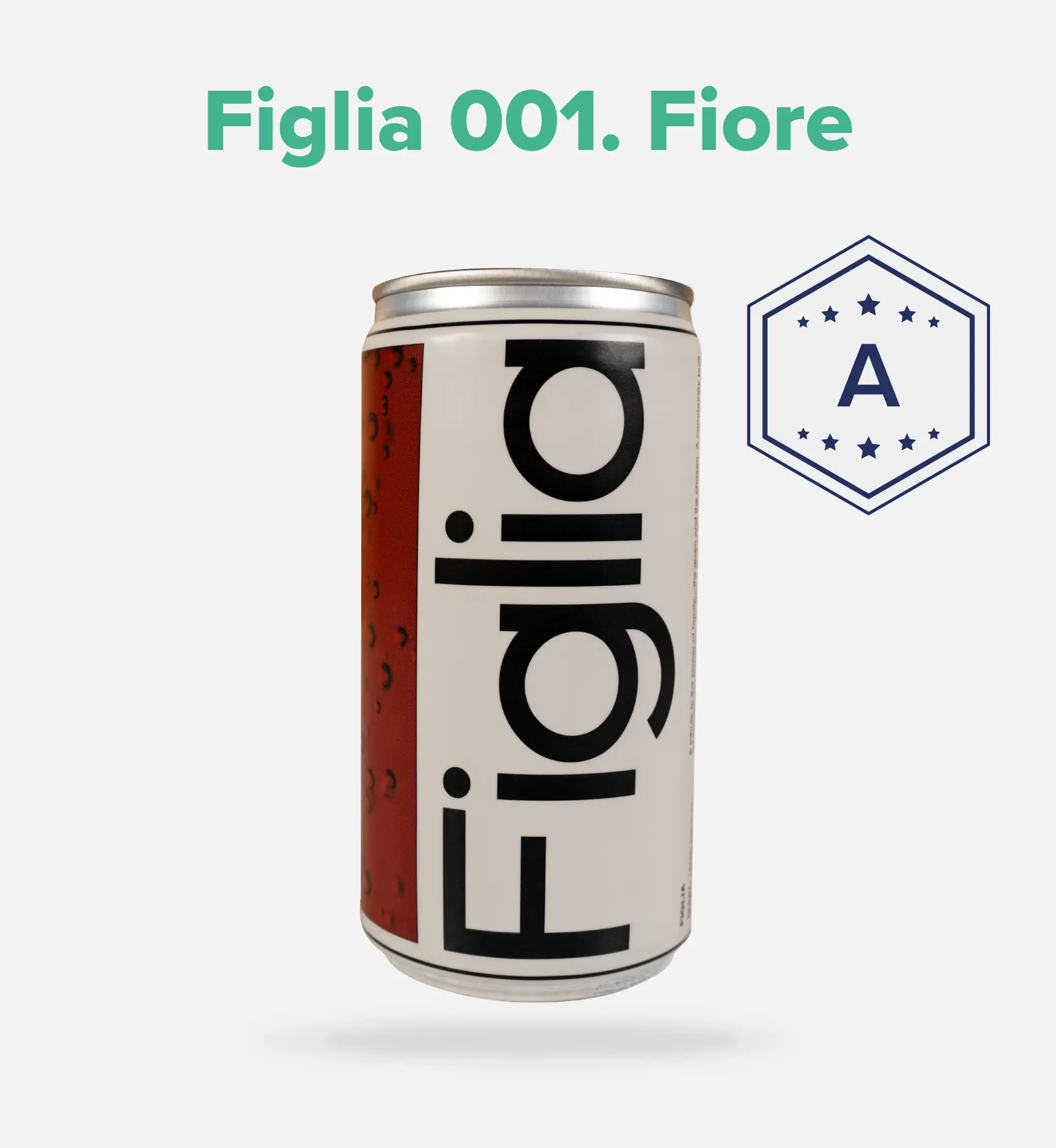Save $40 on your initial consult with a TNI Dietitian!
Talk to a real Dietitian for only $99: Schedule Now
This post contains links through which we may earn a small commission should you make a purchase from a brand. This in no way affects our ability to objectively critique the products and brands we review.
Evidence Based Research To fulfill our commitment to bringing our audience accurate and insightful content, our expert writers and medical reviewers rely on carefully curated research.
Read Our Editorial Policy
There are tons of reasons people, young and old, are interested in trying out sobriety for reasons beyond addiction. In fact, some may even label this interest as “sober curiosity” or being “sober curious.”
For example, some may want to lose weight and cut out the extra calories from alcohol. Others may be trying sobriety as part of a plan to improve liver health from years of excessive drinking or even one of the steps to fixing digestive problems to which alcohol can contribute.
There is also plenty of evidence that cutting down on—or, better yet, cutting out—alcohol can improve your mental health.
Regardless of what your reasons are, sometimes individuals may crave the ritual of imbibing with friends and family or just enjoy the taste of alcoholic beverages.
While we’ve already covered some of our favorite canned mocktails and non-alcoholic wines, we also wanted to share some options for those who enjoy making their own cocktails (or mocktails, in this case).
Here, we’ve put together a list of some of the best non-alcoholic spirits that we tried in 2024.
Wilderton Botanical Non-Alcoholic Spirits
The Nutrition Insider prides itself on being a neutral third party that only reviews products we believe in. Our team consists of doctors, registered dietitians, and food experts dedicated to providing you with the best science-backed takes on the latest food and nutrition trends and health products.
Our content dives deeper than surface-level branding and marketing claims, providing value-added “industry insider” information. For more information about how The Nutrition Insider conducts its reviews and other aspects of our business, please feel free to read our Editorial Policy.

The flavors of Wilderton’s botanical spirits are as close to perfect as you’ll get in a non-alcoholic drink.
One of the best parts of learning more about non-alcoholic spirits and drinks is seeing all the unique combinations of ingredients that companies are using to mimic the flavors of some of our favorite alcoholic beverages. Wilderton is no different and includes some unique ingredients I have yet to see used anywhere else, including sandalwood, patchouli, bay leaf, and benzoin.
Here are the ingredients used for each of their three products:
Bittersweet Aperitivo. Angelica, Cascarilla, Cassia Cinnamon, Chardonnay Grape Juice, Gentian, Grapefruit, Mace, Orange Blossom, Quassia, Rosemary, Sandalwood, Seville Orange, Turkey Rhubarb Root
Lustre. Bitter Orange Peel, Tarragon, Lavender, Bergamot, Rose, Lemongrass, Turkish Bay Leaf, Ceylon Black Tea, Lemon Peel, Linden Blossom, Orris Root, Coriander
Earthen. White Peppercorn, Pine-smoked Tea, Cardamom, Pimentón, Black Pepper, Spearmint, Clove, Cubeb, Aloe Vera, Coriander, Yerba Mate, Patchouli, Benzoin, Nutmeg, Frankincense, Allspice
As for the nutritional value, Bittersweet Aperitivo has about 30 calories per 1.5oz (45mL) serving, whereas Lustre and Earthen contain 0 calories per serving.
My only question (and the only area in which Wilderton was docked points) was a lack of information about where they source their ingredients. While this is certainly not a necessity, it is one of those “nice to have” things that we look for when evaluating the ingredients used in a product.
Wilderton does a great job of mimicking the flavors of some of your favorite alcoholic beverages, including the Bittersweet Aperitivo, which is akin to Campari, Lustre, which I find similar to gin, and Earthen, which could be compared to a whiskey or bourbon.
As a huge fan of bittersweet drinks (hey there, Negroni fans!), I was excited to try the bittersweet aperitivo. As you can see from this list, this is one of the most straightforward alcohols to mimic since the flavors can be reproduced without the addition of alcohol. Mixed with a bit of soda water, this aperitivo taste-a-like hit it out of the park. Though I was trying many products while testing these NA spirits, I kept a separate glass of this one to drink afterward.
Lustre was similarly appealing and very comparable to a good gin. I was pretty impressed! I paired this very simply with tonic water and really enjoyed the flavors. Honestly, if it weren’t for the lack of aftertaste that comes with gin, I would be hard-pressed to say for sure if this was non-alcoholic or not.
I’ll be honest… Earthen was not my favorite spirit I tried on testing day. I will say this: I am far from a whiskey or bourbon fan, so I may not have been the best test subject. I did have my bourbon-loving partner try it, but he was equally dissatisfied. Maybe this would be appealing to someone in between the two of us (not a lover or a hater)? However, this just wasn’t for me. I would try it again if a mixologist made an old-fashioned with it and see if it changed my mind, though.
Otherwise, everything else about these products was great. I love the look and the weight of the bottles. They really wouldn’t stand out as being non-alcoholic on a bar shelf.
Wilderton’s Botanical Spirits are a great choice for those seeking to elevate their non-alcoholic drink game. This comes with a price tag of around $36.99 for 25.4 fl oz (750mL), which, at 17 servings, comes out to about $2.17 per serving.
This may seem steep for a non-alcoholic drink, but considering the ingredients used, and compared to others on the market and in this list, this is a very good price.

After being named our “Best Overall” in our Canned Mocktail round-up, Ghia knocks it out of the park again!
One of our favorite things about Ghia is its creative use of tasty ingredients, including botanicals, herbs, and adaptogens (called “nervines”). They use fruit concentrates such as strawberries, dates, and black currants to sweeten their bitter mixers.
Here are the two products I tried and their ingredients:
Berry Apéritif. Strawberry Juice Concentrate, Black Currant Juice Concentrate, Chamomile Tea, Lapsang Souchong Tea, Date Concentrate, Fermented Green Jasmine Tea, Gentian Root Extract, Acacia, Holy Basil Extract, Honeysuckle Extract, Cardamom Extract, Orange Peel Extract, Clove Extract, Orris Root Extract, Potassium Sorbate, Orange Blossom Extract, Rosemary Extract
Original Apéritif. Water, White Grape Juice Concentrate, Yuzu Juice, Lemon Balm Extract, Elderflower Extract, Gentian Root Extract, Date Concentrate, Plum Concentrate, Acacia, Fruit And Vegetable Juice For Color, Rhubarb Root Extract, Potassium Sorbate, Orange Extract, Ginger Extract, Rosemary Extract
While the nutrition facts are not listed on their website (a ding against their score), the facts for the Berry Apéritif can be found on The Zero Proof. It’s about 15 calories per 1 fl oz (30 mL) serving. Unfortunately, we don’t know the nutrition facts for the Original Apéritif.
I’ll admit, I was coming into this taste test a bit biased since their canned mocktails are now some of my favorite NA drinks to enjoy. However, I believe I can share an unbiased opinion here.
I really enjoyed the Original Apéritif. The flavors are on par with the canned version, the Ghia Le Spritz (aka Ghia Soda). I mixed a serving with soda water and really enjoyed this on its own. However, I can imagine the flavors would be amplified with an NA sparkling wine (one of our favorites is Oddbird’s Blanc de Blancs).
As for the Berry Apéritif, I wasn’t as impressed. It was certainly good, but not great. The cloves were just too front and center and were an odd combination. It took away from the yummy strawberry flavors that were present.
That said, the rest of the product experience was great—easy to open, etc. The bottles are especially visually appealing, and I plan to keep and reuse them once I’m finished.
Ghia’s aperitifs are slightly more expensive than others on this list. At $38.00 for 16.9 fl oz (500mL) and 17 servings, this comes out to about $2.23 per serving. Still, for the quality of the product and ingredients, this is a pretty average cost.

After first meeting this brand at Expo West 2024 and trying the Fiore Frizzante, I’ve been hooked. While harder to find, they are totally worth the chase!
I am totally in love with Figlia’s Fiore Non-Alcoholic Aperitif and their Fiore Frizzante canned non-alcoholic drink. While not an exact 1:1 for a Campari, Figlia does a fabulous job of creating a unique drinking experience.
These two are essentially the same product, but the canned drink adds carbonated water. So here are the ingredients:
Carbonated Water/Filtered Water, White Grape Juice Concentrate, Ginger Juice, Lemon Juice, Rose Extract, Rosemary Extract, Elderflower Extract, Black Currant Juice Concentrate, Chamomile Extract, Ginseng Root, Lemon Balm, Bitter Orange Rind, Clove, Fruit & Vegetables Extract (For Color)
According to the nutrition facts, the calorie count is a bit higher than others on this list. For a 2 fl oz (60ml) serving, 30 calories are mostly natural (no added) sugars.
While I like both of these products, I prefer the canned version of this drink as I feel the rose flavor isn’t as prominent.
It could have just been the batch I got, but the bottled aperitif had a very strong rose and clove flavor. Maybe I’m just sensitive to clove (or not a fan of it in sweeter products), but it stood out to me. I don’t remember this flavor as much as when I first tried it at Expo West earlier this year (2024).
Regardless, I am still a huge fan of this brand and its products. I love that it doesn’t try to be a mock Campari non-alcoholic spirit and can stand apart as its own thing.
Here’s the cost breakdown for a bottle of the Fiore Aperitif. There are 12.5 servings per 12.4 fl oz (750ml) bottle of the Fiore Aperitif, which costs $43.00. This comes out to $3.44 per serving.
The 12-pack of the Fiore Frizzante costs an eye-watering $72 or $6 per can. So, yes, it’s a better deal to purchase the bottle and add your own carbonated water. However, the cans might be a better choice if you want something to take on the go.
There’s no getting around the higher cost per serving for these, bringing down their grade to an A. I just don’t see how they can justify doubling the cost of the cans by adding carbonated water. Yes, there is an added cost for the cans and labeling, but there has to be a more cost-effective solution.

With three incredibly unique non-alcoholic spirits, Three Spirit provides adaptogen-loaded mocktails designed to create different moods and provide a booze-free buzz.
Three Spirit provides, well, three spirits that are non-alcoholic yet still designed to pack a punch. Whether it’s the caffeine-containing guayusa in the Livener or the sleepy lemon balm and ashwagandha in the Nightcap, the ingredients are well thought out and created to induce different moods.
Here’s a look at each of the three non-alcoholic spirits and what they’re designed for:
Livener: Also known as “The Pick-Me-Up,” this mocktail contains 57.5mg of natural caffeine from guayusa and has vibrant, fruity flavors with a bit of spice from ginger and cayenne. It definitely wakes you up!
The full ingredients are:
Purified Water, Unrefined Cane Sugar, Watermelon Concentrate, Pomegranate Concentrate, Botanical Extracts Of; (Hibiscus, Guava Leaf, Schisandra Berry, Guayusa Leaf, Ginseng, Cayenne Pepper, Ginger), Natural Flavors, Apple Cider Vinegar, Tartaric Acid, Black Carrot, L-Theanine, Caffeine, Potassium Sorbate (for freshness).
40 calories, 8g of sugar
Social: AKA “The Mood Maker,” the Social elixir contains lion’s mane, tulsi, and cacao to lift spirits and reduce inhibitions (no alcohol required). It’s more herbaceous and bitter with a bit of savory notes.
The ingredients are: Purified Water, Agave Nectar, Botanical Extracts Of; (Damiana Leaf, Lion’s Mane Mushroom, Yerba Mate, Passion Flower, Cacao Bean, Caraway, Green Tea), Apple Cider Vinegar, Blackstrap Molasses, Black Carrot, Tartaric Acid, Potassium Sorbate (For Freshness), Vitamins; B3 (Niacin), B6 (Pyridoxine), B7 (Biotin), B12 (Cobalamin).
25 calories, 5g of sugar
Nightcap: Sweet and spicy with a ginger-licorice kick, the Nightcap (“The Dream Maker”) is ideal for winding down and relaxing. It has lemon balm and ashwagandha to chill you out, as well as woody notes of whiskey.
Purified Water, Canadian Maple Syrup, Hüll Melon Hops, Botanical Extracts Of; (Lemon Balm, Turmeric Root, Ashwagandha Root, White Willow Bark, Vanilla Orchid, Valerian Root, Licorice Root, Ginger), Food Acid: Lactic Acid, Tannin Infusion, Potassium Sorbate for freshness, Vitamin C (Ascorbic Acid).
30 calories, 8g of sugar
All three of these non-alcoholic spirits are delicious in their very unique ways. If you’re sensitive to caffeine, don’t drink the Livener in the evening, as it contains about the same amount of caffeine as a small cup of coffee. But if you’re needing a pick-me-up before a day or night out, that’s the drink for you!
The Nightcap is a favorite, as I loved the complex, woody, and slightly spicy flavors. While Three Spirit has many mocktail recipes they recommend to mix up, I simply tried it on its own over ice. Two prominent ingredients that stood out were the licorice and ginger—both of which “got you” in the back of the throat. However, neither of those flavors was overpowering—as someone who does not like licorice (or whiskey), I still loved this drink.
Three Spirit is on the pricey side, with each 16.9oz bottle costing $39. At 10 servings per bottle (they recommend a 1.7oz serving), that comes out to $3.90 per drink. However, as they use unique blends of adaptogens, nootropics, and specialty botanical ingredients, the price is somewhat justified.
Here at The Nutrition Insider, we utilize bespoke selection and testing criteria to help us find products that we believe are the best the market offers.
Some of these products are from our trusted brands, which we have reviewed in the past and can subsequently count on to offer high-quality products.
Others we’ve found in an extensive search using good old-fashioned search engine sleuthing, perusing internet forums, and consulting consumer reviews.
Here’s a breakdown of how this selection and testing process was carried out.
We sought out brands in the non-alcoholic spirit category that adhered to our expectations for quality ingredients, transparency, and, above all, taste.
Taste was so important to us in this selection process that we tested some that did meet our criteria but failed so horribly in taste that we excluded them from this list. Safe to say, the category has a long way to go when it comes to crafting non-alcoholic spirits.
The testing methods for this round-up were very straightforward. I poured one serving (as defined by the label) of each over ice and added carbonated or tonic water, as recommended. I considered smell, taste, and aftertaste in grading each product.
For each product category, we utilize unique rubrics that contain product attributes graded on a 0-100 scale. This number is then turned into a letter grade, which we feel is a more quickly digestible metric for readers.
For the non-alcoholic spirits category, I based my grades on the following attributes: nutritional value, ingredient quality, taste & flavor, texture, packaging, transparency & labeling, accessibility, and value.
As someone who prefers bittersweet alcoholic beverages, this list leans towards these types of non-alcoholic spirits. However, I believe that some of the easiest liquors to mimic the taste of in a non-alcoholic form are bittersweet aperitivos (think Campari and Aperol). So, in my opinion, the best-tasting non-alcoholic liquors are drinks like Ghia’s Original Aperitif or Wilderton’s Bittersweet Aperitivo.
Non-alcoholic spirits will not give you a buzz like alcohol. These products (unlike non-alcoholic wines, for example) are typically made without needing to remove alcohol at any point in the process. Some people may be more reactive to adaptogens in drinks like Ghia or Three Spirit, which can range from mellowing to energizing.
In most cases, non-alcoholic spirits will not evoke the same exact taste as alcoholic beverages. This is due to the lack of alcohol (duh) which imparts a very unique aftertaste that is difficult if not impossible to replicate with current food technology/science. However, this is preferred by some recovering alcoholics who may feel triggered by the taste of alcohol. For those who are simply sober or sober curious individuals who enjoy the taste, you may find Wilderton’s Lustre to be a pretty close imitation of gin.